- Home
- Thomas Keneally
Australians, Volume 3 Page 10
Australians, Volume 3 Read online
Page 10
The Bank of England did not want to give the impression that whomever it sent to Australia would be interfering with Australian domestic affairs. The emissary: Sir Otto Niemeyer himself! Scullin agreed to welcome Niemeyer, but to Scullin’s battler constituency, prim Niemeyer would become one of the great Satans of Australian history, a banker robot who put loan repayment above the sufferings of the Australian populace. Niemeyer’s own lack of human colouration would feed into the concept of his vampire-hood.
But the knowledge that Niemeyer was coming to Australia brought an immediate improvement in government bond prices in London and encouraged Scullin and Theodore greatly. Scullin hoped the idea that the great Niemeyer was coming to straighten out the Australians would also relieve the pressure on states who dealt with the Westminster Bank. But in fact the pressure only increased, and the Commonwealth Bank had to lend some Australian money to pay interest due to the Westminster Bank at the end of June 1930. This reduced to a dangerously low level the Commonwealth Bank’s assets.
Niemeyer arrived in Perth in July 1930, accompanied by T.E. Gregory, Professor of Banking at the University of London, and R.N. Kershaw, an Australian on the staff of the Bank of England. After only three weeks, which he spent mainly in meetings and social gatherings with bankers who were disgruntled with the government, he met the Loan Council to give his preliminary verdict on the Australian crisis. Niemeyer had been in Australia barely a month when, at a meeting in Melbourne, he issued his judgement on the state of things to Scullin and the premiers. Between 1911 and 1927–28, per capita productivity had increased by a mere 1 per cent, he lectured them. Thus the country, with its borrowings by federal and state governments, was living beyond its means: the standard of living was too high. Its tariff levels, which protected the prices Australian manufacturers asked for their products, were also too high: ‘I assume that everybody in this room is in agreement that costs must come down . . . there seems to me to be little escape from the conclusion that in recent years Australian standards have been pushed too high relatively to Australian productivity and to general world conditions and tendencies.’
Chastened premiers (except for Lang of New South Wales) and Prime Minister Scullin agreed with Niemeyer’s terms, and undertook to balance their budgets in 1930–31. In that room in Melbourne, Niemeyer was dragging a desperate set of politicians towards policies very different from Roosevelt’s New Deal. Roosevelt was not only a force of nature but also had a vast manufacturing base, if presently in a flaccid condition, and was in a stronger position to deal with offshore banks through his borrowings from American ones and through bond issues. Australia was—and this proved it yet again—not America. In any case, the premiers who gave their pledge to Niemeyer secretly knew that their books could not be quickly balanced, and that to try to do it at the expense of all aid to the unemployed was political suicide. A pledge to balance budgets was a gesture they had to make to satisfy the overseas banks and perhaps encourage them to be more lenient and more forthcoming. As well as that, Niemeyer and the head of the Commonwealth Bank Board, Sir Robert Gibson, must have themselves known that budgets could not be balanced in such a short time. They were all, said Gibson later, the Englishmen and the Australians, trying to ‘achieve the necessary atmosphere’. They were doing a fiscal tango.
Niemeyer departed, but his advice led to a meeting of Commonwealth and state governments in Melbourne in mid-August, whose object was to restate the necessity for balancing all budgets. Until external debt was dealt with, any further loan money would need to come from Australian sources. A special account was to be opened at the Commonwealth Bank by the Australian governments solely for the payment of interest on loans. And the Commonwealth and state treasurers would publish monthly, in Australia and overseas, a brief summary showing revenue and expenditure, the position on short-term debt, and debt repayment generally. And all this would be aimed at increasing Australia’s bona fides and attracting British credit and investment.
Could matters have been handled differently? Were the Australians mere subjects whipped into shape by Niemeyer? Whatever the judgement of experts, for the Australian working class, Sir Otto Niemeyer was an imperial villain who snatched bread from their children’s lips.
MARMITE JAR YEARS
Before looking at Jack Lang’s rebellion against the so-called Premiers’ Plan, it is appropriate to see what this situation was doing to the mass of unemployed. If a person wanted a job then he had to accept lower wages—that was ingrained conservative economic thinking. Phyllis Ackland and her husband would have willingly done so, and had—like many others—taken to the road looking for such ill-paid employment. They had gone to Temora in New South Wales where Phyllis’s husband looked for work. Phyllis was six months pregnant and had a baby with bronchitis. The family slept in the park—‘overcoats for blankets and nothing else. We didn’t even have a spoon for the baby.’ A man who had worked with her husband gave them a spare room, but they lay on the bare boards. And yet there was pride and necessity at work in that time. People, said Phyllis, ‘made blankets out of corn bags which they would dye green, and curtains out of chaff bags, and the kids’ clothes out of flour bags’. Phyllis said that after they moved to Port Kembla, her husband could get only occasional work and ‘it took us seven years to pay off the grocer’s bill’. ‘We didn’t recover from the Depression, ever! . . . we ended up drinking out of Marmite jars.’
Eddy Harmer of Wonthaggi in Victoria was laid off in 1932 with 480 other miners and became dependent on the state’s dole: ‘It was a terrific shock and humiliation for me to think I was lowered down so far that I had to form a queue, along with the missus, to put these dole tickets over the counter. At first, for a man, wife and a child, it was eleven and sixpence worth of dockets [per week].’ There was a three-shilling docket which could go to pay for groceries, another three-shilling docket for bread and another three shillings for meat, together with two and six for the child allowance.
The indignities of queuing and handing over tickets to storekeepers affected the Harmers, and Eddy helped form the Wonthaggi Workers’ Unemployed Union and became its secretary. The Unemployed Union’s aim was to do away with the docket system and get money in its place. They eventually won that concession from Victorian premier Sir Stanley Argyle. But the government also gave the power to distribute the money to councils, who were to allocate work to justify the handouts.
People like Harmer, the unemployed activists, were sent by the council to work at what he called Siberia, an area where night soil was buried. He believed he was put there to keep him from agitating amongst those working on the roads, since he was, like other former Wonthaggi miners, considered a Red, even though he was not a Communist. Hence there was tension between Harmer’s need to be able to feed his family without molestation, and his desire at the same time to take part in the union and activate his fellow workers. At Wonthaggi Town Hall, the town clerk told Harmer that his dole payment had not come through. ‘I sat in the old park there, near the Post Office, and asked myself: How the devil can I go home to my wife without the money?’ When he went to see Idris Williams, president of the Miners’ Union, Williams became excited and declared he’d been waiting for a case just like this, a miner out of work who was refused the dole because he had taken a militant line. That was all very well for Williams, Harmer thought, but what do my wife and kids live off in the meantime?
So Harmer returned for one more confrontation with the town clerk, and told him that Williams would call a public meeting on Sunday and let all the people in Wonthaggi know what had happened. Faced with this threat of turbulence, the town clerk went into a back office and found that Harmer’s money had in fact just come through. He even gave Harmer some clothing. Harmer could not help being delighted, but Williams was infuriated. ‘You sacrificed the struggle for thirty-four and sixpence and a pair of boots and a couple of shirts,’ he declared.
Harmer continued with the struggle, however, and was involved in organisin
g a march on Parliament House in Melbourne. The Country Party’s Dunstan government increased the dole by four and six, but many conservative people who saw or heard about the march took it as yet another sign of Red revolution on the hoof.
Lang meanwhile had made his own inroads into unemployment. Newly re-elected as premier in New South Wales in 1930, Lang was a workers’ hero. He had set out, using steamrollers and machinery borrowed from councils, and picks and shovels borrowed from the army, to build what workers called ‘Gallipoli’—the Parramatta Road between Homebush and Lidcombe. To pay for it, and also to raise the money to subsidise what hard-up farmers got from their wheat, he floated a loan within Australia with the help of journalists from the Sun and the Evening News. One farmer wanted to invest a prize bull in the loan.
Generally the Depression was hell for farmers too. Bill Entz was a soldier settler in Far North Queensland, on the Atherton Tablelands, where he had been given 69 acres (28 hectares). He and his family walked off the land without telling anyone, carrying their suitcases, the children trailing. ‘Left everything, completely broke! I worked out west until the disease known as Barcoo spews got me.’ As his son, also Bill, remembered, his father had, like many, ‘shot through’ and left his debts. ‘And he never forgave Mother [that] she advised him to.’ The children’s mother came from Kent, ‘a lovely, green, civilised area . . . [In Australia] she lived in bag humpies with dirt floors, and a dirt floor means that everything in sight is dirty too. She got a house with a floor in it when she was fifty.’
And after its great success, the west became an arena of tears. A Western Australian woman named Vera had found, as had many others throughout the Commonwealth, that the hard times had begun in the mid-1920s. Her father was a returned soldier and the bank owned their twenty-acre (eight hectare) property. The father could not get any pension from the Repatriation Commission. Things became worse as his health failed and there was less of a market, as the Depression struck, for the biscuits Vera and her mother made and hawked around the businesses and doctors’ offices of St Georges and Adelaide Terraces in Perth.
The state government involved itself in help for the unemployed only when the task became too great for private charitable organisations and municipal councils. The Lord Mayor of Perth’s Fund, for example, had provided meal and bed tickets, but ran out of money by July 1930. Other voluntary organisations still operational included the Salvation Army, the Silver Chain and the Ugly Men’s Association (a peculiarly Western Australian charity), along with the RSL. The RSL proposed a meeting for unemployed ex-servicemen, and over four hundred turned up, skilled workers who wanted not sustenance but jobs.
In Western Australia, the state’s sustenance allowance was seven shillings a week for a single man, fourteen shillings for a married couple and seven shillings for each child under fourteen, up to a maximum of five children. For single men, two-sevenths was in the form of cash, and the rest came as orders or dockets for food, meals or accommodation. But no Western Australian male could claim this dole until he had sold all his assets apart from his home, if he owned one. People called going on welfare ‘going on sus’, and struggled to avoid it.
One of the problems was that Western Australia lacked genuine plutocrats. The old pastoral dynasties such as the Lee-Steeres, the Lefroys and the Wittenooms might have owned a couple of sheep stations and a wide-verandaed townhouse in West Perth or Peppermint Grove, but they were more affluent than opulent. They were nothing like the members of the Adelaide or Melbourne Clubs, or of the Union Club in Sydney. Those who had made a lot of money in Western Australia—the cattle kings such as Sam Copley and Isadore Emanuel—were living in London. Seventy-year-old Harry Boan was the owner of local department stores, a man who began by selling goods out of a suitcase on the goldfields. He now became a prodigiously generous provider to the unemployed. A similar story was that of Sir Charles McNess, a seventy-year-old Scots Presbyterian-cum-Anglican who had arrived in Western Australia in 1876 and opened a small hardware store, and made his fortune from there. Approached by the gifted state public servant Louis Edward Shapcott and asked to funnel money to the unemployed through one of the boards Shapcott ran under state government aegis, the State Gardens Board, McNess agreed. A great deal of McNess’s money was in this way spent topping up the dole of men put to work on a town-building project at Yanchep, north of Perth, for which Shapcott acquired the machinery by borrowing it from various state government departments. The men working for the dole at Yanchep found that they received three days’ work at award wages, and were thus doing better than their fellows working elsewhere. Shapcott also received a further £5000 from McNess to help the state government build a number of new houses. This project became larger still when the state government threw in £15,000 given to it out of federal relief money. All these funds were stretched by Shapcott so that some men were able to be kept in work for a year. McNess, like his fellow septuagenarian Harry Boan, was also donating money to the Lord Mayor’s Fund. He and his wife Annie lived frugally, honouring that great Scottish virtue, thrift. Simply through his housing trust, his ultimate donations amounted to £90,000, an unprecedented act of benevolence by any standards in that era. Before the Depression was over, Lady McNess died, and Sir Charles donated £11,500 to construct the Lady McNess Memorial Drive in the Darling Ranges—another project providing work for the unemployed.
The government plan to send unemployed single men to the former military camp at Blackboy Hill was at first resisted, but Blackboy became a viable farming operation and soon some men were applying to go there, putting their names on a waiting list. Those who resided at Blackboy Hill worked in a nearby national park at the foot of the Darling Ranges.
Meanwhile, many local relief committees, such as that in Geraldton, were reduced to giving unemployed young men five shillings to go and look for work elsewhere. There was a powerful sense that young unemployed men, milling together, were trouble of one sort or another, and certainly could make political trouble, and were better moved on. When Perth workers went to country towns in the hope of finding work on the harvests that Premier Mitchell had spoken about so positively, they found themselves accommodated in public halls but without blankets—the metropolitan demand for those items was so intense that Perth had none left to send to the bush.
Throughout Australia, men who were moved on from town to town were often surly or rebellious. In many cases, towns provided only one-night stays to those looking for work. Non-residents who presented themselves at Fremantle for public accommodation or sustenance were sent back to where they had last come from.
It was not the age of universal human dignity.
At the start of his second stint in government in November 1930, New South Wales premier Lang passed legislation in favour of those hit by the Depression. To the poor, Lang seemed to be the only person standing up for them, and they were willing to celebrate him for that fact. ‘We are great Lang people here,’ said Phyllis Ackland. ‘Over our fireplace for years we had written up J.T.L.—Justice, Truth and Liberty. We called him Justice, Truth and Liberty Lang.’ He had framed an Anti-Eviction Bill restraining landlords from auctioning tenants’ possessions to recover rent. He planned to legislate to postpone the date for the repayment of the principal of mortgages and other loans, and to ensure that guarantors of loans were no longer held responsible for payment of defaulted loans. He put in place a state lottery to assist hospitals, and an increased unemployment relief tax. ‘Should the men who had done the fighting,’ he asked in his combative manner, ‘now go without the necessities of life in order that the international money ring should have its pound of flesh?’ There was some measure of anti-Semitism in his oratory, and Otto Niemeyer’s Jewishness played to that as well; Lang spoke of ‘London Jews with their fat rake-offs’.
The Federal Labor Conference of May–June 1931 occurred in a land where unemployment was well on its way to the official 29 per cent it would achieve in the following year, higher than that of the United S
tates, Britain and Canada. The impact on diminishing wages for workers and the income of small farmers and shop owners was massive. And now Jack Lang, returned to the premiership of New South Wales, had parliamentary disciples in the federal House and amongst delegates to the federal conference. He wanted to destroy Scullin and Theodore, who had both succumbed to Niemeyer. The conference opened in Canberra on 26 May, and Scullin’s chief opponents were the inflationists like Lang, who wanted more money printed, and who favoured defaulting on loans. Theodore, Scullin and Tasmanian member of parliament Joseph Lyons spoke dutifully about the economies they had made in their spending, but their sense of social justice did not allow them to cut pensions and the program of child endowment. Yet by now, Scullin had had it reinforced by the Bank of England and the Commonwealth Bank that he really must cut his social justice program, in which he believed not only on the political plane but theologically. Again, as for other Catholic politicians, his social justice text was Rerum Novarum, Catholicism’s answer to Marx.

 Confederates
Confederates Flying Hero Class
Flying Hero Class Gossip From the Forest
Gossip From the Forest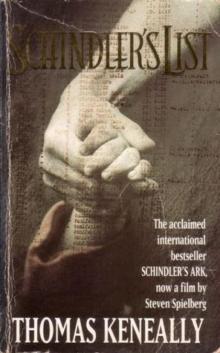 Schindler's List
Schindler's List Bring Larks and Heroes
Bring Larks and Heroes Australians: Flappers to Vietnam
Australians: Flappers to Vietnam The People's Train
The People's Train Crimes of the Father
Crimes of the Father A Family Madness
A Family Madness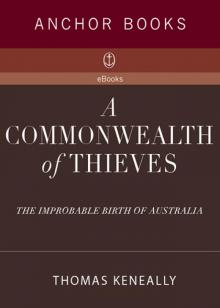 A Commonwealth of Thieves
A Commonwealth of Thieves Ned Kelly and the City of Bees
Ned Kelly and the City of Bees A River Town
A River Town Bettany's Book
Bettany's Book Blood Red, Sister Rose: A Novel of the Maid of Orleans
Blood Red, Sister Rose: A Novel of the Maid of Orleans Victim of the Aurora
Victim of the Aurora American Scoundrel American Scoundrel American Scoundrel
American Scoundrel American Scoundrel American Scoundrel Three Cheers for the Paraclete
Three Cheers for the Paraclete Australians: Origins to Eureka: 1
Australians: Origins to Eureka: 1 The Power Game
The Power Game The Chant Of Jimmie Blacksmith
The Chant Of Jimmie Blacksmith The Daughters of Mars
The Daughters of Mars Searching for Schindler
Searching for Schindler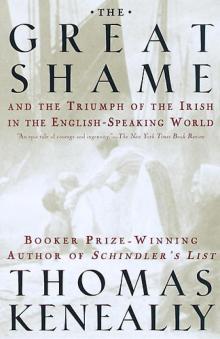 The Great Shame: And the Triumph of the Irish in the English-Speaking World
The Great Shame: And the Triumph of the Irish in the English-Speaking World Abraham Lincoln
Abraham Lincoln The Widow and Her Hero
The Widow and Her Hero Eureka to the Diggers
Eureka to the Diggers Shame and the Captives
Shame and the Captives The Survivor
The Survivor Jacko: The Great Intruder
Jacko: The Great Intruder The Book of Science and Antiquities
The Book of Science and Antiquities Homebush Boy
Homebush Boy The Playmaker
The Playmaker To Asmara: A Novel of Africa
To Asmara: A Novel of Africa A Woman of the Inner Sea
A Woman of the Inner Sea The Tyrant's Novel
The Tyrant's Novel Australians
Australians Schindler's Ark
Schindler's Ark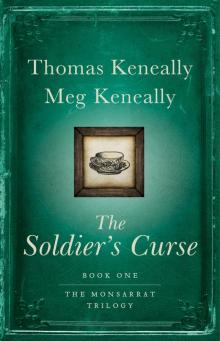 The Soldier's Curse
The Soldier's Curse Australians, Volume 3
Australians, Volume 3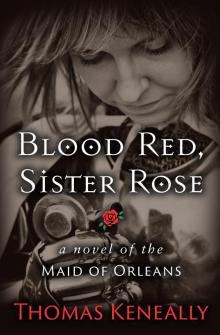 Blood Red, Sister Rose
Blood Red, Sister Rose A Victim of the Aurora
A Victim of the Aurora The Unmourned
The Unmourned Australians, Volume 2
Australians, Volume 2 To Asmara
To Asmara